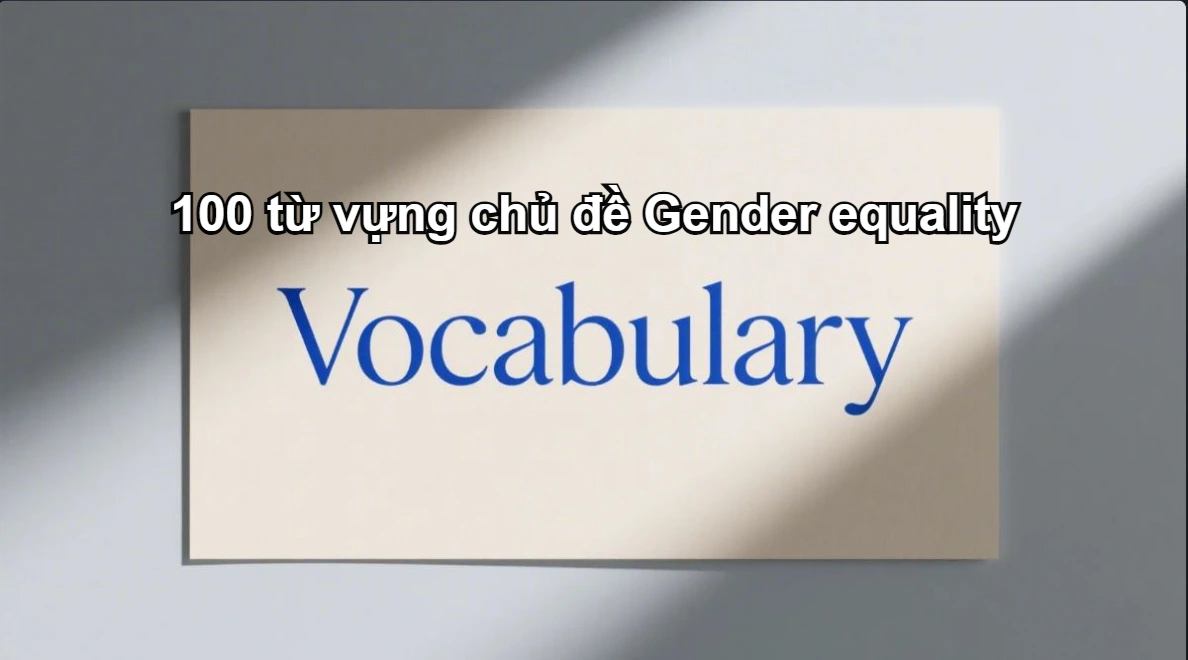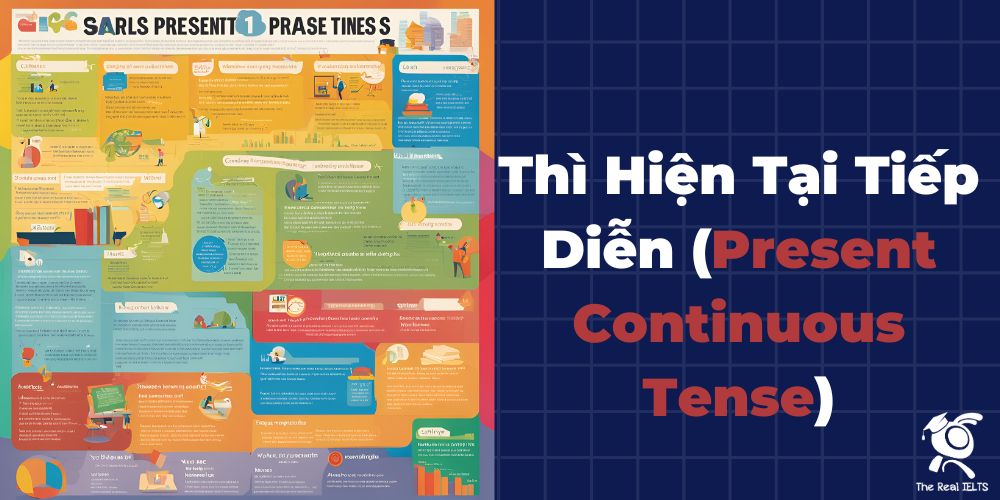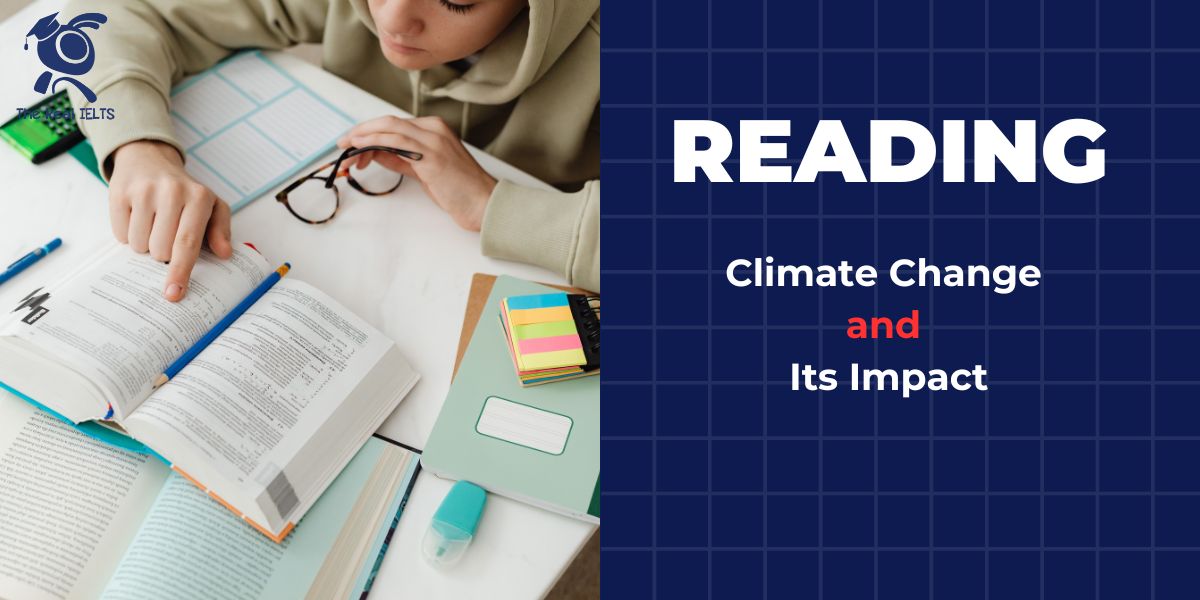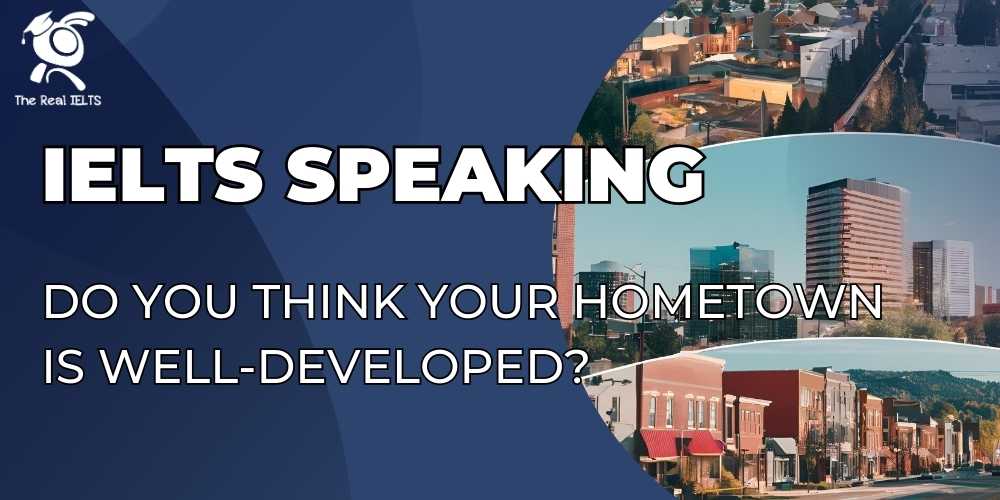Kỹ năng đọc hiểu trong kỳ thi IELTS là thử thách lớn, yêu cầu thí sinh phân tích nhanh các văn bản học thuật phức tạp. IELTS Reading đòi hỏi sự kết hợp giữa vốn từ vựng phong phú, khả năng đọc lướt và đọc sâu để trả lời chính xác 40 câu hỏi trong 60 phút. Để đạt band cao, người học cần rèn luyện kỹ năng skimming, scanning và quản lý thời gian hiệu quả, đảm bảo tối ưu hóa điểm số trong phần thi này.
Đọc thêm: IELTS Reading 11 dạng bài phần 8
The Impact of Urban Green Spaces
Urban green spaces, such as parks and community gardens, play a vital role in improving the quality of life in cities. These areas provide residents with opportunities for physical activity, relaxation, and social interaction. Studies have shown that access to green spaces can reduce stress levels and improve mental health. For example, a 2019 study in Denmark found that children raised near parks or forests were less likely to develop anxiety disorders. Additionally, green spaces contribute to environmental sustainability by reducing air pollution and mitigating the urban heat island effect, where cities become significantly warmer than surrounding rural areas due to concrete and asphalt.
Many cities are now prioritizing the development of green spaces. Singapore, for instance, has implemented a “City in a Garden” vision, integrating greenery into urban planning. This includes rooftop gardens and vertical green walls on buildings. However, creating and maintaining these spaces can be costly, and some cities struggle to allocate sufficient funds. Community involvement is often encouraged to ensure these areas remain accessible and well-maintained. Volunteers may participate in planting trees or cleaning parks, fostering a sense of ownership among residents.
Despite their benefits, not all urban green spaces are equally accessible. In some cities, wealthier neighborhoods have more parks, while poorer areas may lack such facilities. Addressing this inequality is crucial to ensuring all residents can enjoy the advantages of green spaces.
Questions
- Urban green spaces help reduce air pollution in cities.
- A study in Denmark showed that green spaces increase anxiety in children.
- Singapore’s “City in a Garden” vision includes building more skyscrapers.
- Wealthier neighborhoods always have better access to green spaces than poorer ones.
- Community volunteers are responsible for funding urban green spaces.
Answers
- True
- False
- False
- Not Given
- False
Explanations
- True: Đoạn văn đề cập rằng không gian xanh đô thị góp phần vào tính bền vững môi trường bằng cách giảm ô nhiễm không khí (Additionally, green spaces contribute to environmental sustainability by reducing air pollution).
- False: Đoạn văn nói rằng một nghiên cứu ở Đan Mạch năm 2019 cho thấy trẻ em lớn lên gần công viên hoặc rừng ít có khả năng mắc rối loạn lo âu hơn (children raised near parks or forests were less likely to develop anxiety disorders), trái ngược với việc tăng lo âu.
- False: Đoạn văn đề cập đến tầm nhìn “City in a Garden” của Singapore, bao gồm việc tích hợp cây xanh vào quy hoạch đô thị như vườn trên mái và tường xanh (rooftop gardens and vertical green walls), không nhắc đến việc xây thêm nhà chọc trời.
- Not Given: Đoạn văn nói rằng ở một số thành phố, khu vực giàu có có nhiều công viên hơn, trong khi khu vực nghèo hơn có thể thiếu các cơ sở này (In some cities, wealthier neighborhoods have more parks, while poorer areas may lack such facilities). Tuy nhiên, không có thông tin khẳng định rằng điều này luôn đúng ở mọi nơi.
- False: Đoạn văn đề cập rằng cộng đồng tham gia vào việc trồng cây hoặc dọn dẹp công viên (Volunteers may participate in planting trees or cleaning parks), nhưng không nói rằng họ chịu trách nhiệm tài trợ cho các không gian xanh này.
The Impact of Urban Green Spaces
Urban green spaces, such as parks and gardens, play a crucial role in enhancing the quality of life in cities. These areas provide residents with opportunities for recreation, relaxation, and social interaction, contributing to both physical and mental well-being. Studies have shown that access to green spaces can reduce stress, lower blood pressure, and encourage physical activity, which helps combat obesity. Moreover, green spaces improve air quality by absorbing pollutants and producing oxygen, creating healthier urban environments. In densely populated cities, where concrete dominates, these areas act as vital “lungs,” mitigating the urban heat island effect, where city temperatures are significantly higher than in rural areas. However, maintaining green spaces requires significant investment in planning and resources, which can strain municipal budgets. Additionally, not all urban populations have equal access to these areas, with lower-income neighborhoods often having fewer or poorly maintained parks. Efforts to address this issue include community-driven initiatives and government policies aimed at equitable distribution of green spaces. In recent years, innovative designs like vertical gardens and rooftop parks have emerged as solutions to limited land availability, particularly in megacities. These modern approaches not only maximize space but also enhance biodiversity by providing habitats for birds and insects. As urbanization continues to accelerate, the importance of integrating green spaces into city planning cannot be overstated, ensuring sustainable and livable urban environments for future generations.
Questions
- What is one benefit of urban green spaces mentioned in the passage?
A. Increasing urban temperatures
B. Reducing stress levels
C. Decreasing biodiversity
D. Limiting social interaction - How do green spaces help improve urban environments? (Choose 2 correct answers)
A. They absorb pollutants.
B. They increase concrete coverage.
C. They produce oxygen.
D. They reduce municipal budgets. - What challenge is associated with maintaining urban green spaces?
A. Lack of community interest
B. High financial costs
C. Excessive land availability
D. Reduced air quality - What is a consequence of unequal access to green spaces?
A. Lower-income areas have better parks.
B. All neighborhoods have equal park quality.
C. Some areas have fewer or poorly maintained parks.
D. Green spaces are evenly distributed. - What modern solutions are mentioned for limited land availability in cities? (Choose 2 correct answers)
A. Vertical gardens
B. Underground parks
C. Rooftop parks
D. Large-scale deforestation
Answers
- B
- A and C
- B
- C
- A and C
Explanations
- Câu 1: Đáp án đúng là B
Đoạn văn nêu rằng việc tiếp cận không gian xanh có thể “giảm căng thẳng” (reduce stress).- A sai vì không gian xanh giúp giảm hiệu ứng đảo nhiệt đô thị, không làm tăng nhiệt độ.
- C sai vì không gian xanh tăng cường đa dạng sinh học, không làm giảm.
- D sai vì không gian xanh khuyến khích tương tác xã hội, không hạn chế.
- Câu 2: Đáp án đúng là A và C
Đoạn văn đề cập không gian xanh “hấp thụ chất gây ô nhiễm” (absorb pollutants) và “tạo ra oxy” (produce oxygen).- B sai vì không gian xanh không làm tăng độ phủ bê tông mà ngược lại, giảm nó.
- D sai vì không gian xanh làm tăng chi phí ngân sách, không giảm.
- Câu 3: Đáp án đúng là B
Đoạn văn nói rằng duy trì không gian xanh đòi hỏi “đầu tư đáng kể vào quy hoạch và nguồn lực” (significant investment in planning and resources), ám chỉ chi phí tài chính cao.- A sai vì không nhắc đến thiếu sự quan tâm của cộng đồng.
- C sai vì vấn đề là thiếu đất, không phải dư thừa.
- D sai vì không gian xanh cải thiện chất lượng không khí, không làm giảm.
- Câu 4: Đáp án đúng là C
Đoạn văn nêu rằng các khu vực thu nhập thấp thường có “ít công viên hơn hoặc công viên được duy trì kém” (fewer or poorly maintained parks).- A sai vì khu vực thu nhập thấp không có công viên tốt hơn.
- B sai vì không phải tất cả các khu vực đều có chất lượng công viên bằng nhau.
- D sai vì không gian xanh không được phân phối đồng đều.
- Câu 5: Đáp án đúng là A và C
Đoạn văn đề cập đến “vườn thẳng đứng” (vertical gardens) và “công viên trên mái” (rooftop parks) là giải pháp cho tình trạng thiếu đất.- B sai vì không nhắc đến công viên dưới lòng đất.
- D sai vì phá rừng không phải là giải pháp và không được đề cập.
The Role of Technology in Education
Technology has transformed education in numerous ways, reshaping how students learn and teachers instruct. Many educators believe that digital tools, such as interactive whiteboards and online learning platforms, enhance student engagement by making lessons more dynamic and accessible. These tools allow students to access resources anytime, which some argue promotes independent learning. However, critics point out that excessive reliance on technology can reduce face-to-face interaction, potentially hindering the development of social skills. Studies suggest that while technology improves access to information, it does not always lead to better academic outcomes, especially if students are distracted by non-educational content online. In developing countries, the digital divide remains a significant barrier, as many students lack access to reliable internet or devices. Some experts claim that virtual reality (VR) could revolutionize education by offering immersive learning experiences, though its high cost limits widespread adoption. Additionally, there is a growing concern that technology may widen educational inequalities, as wealthier schools can afford advanced tools while poorer ones cannot. Despite these challenges, most agree that technology, when used thoughtfully, can complement traditional teaching methods and prepare students for a digital future.
Questions
- Do educators believe that digital tools make lessons more engaging?
- Does the passage state that technology always improves academic performance?
- Is there evidence in the passage that technology reduces the need for teachers?
- Do critics argue that technology can negatively affect social skills development?
- Does the passage mention that virtual reality is widely used in schools?
Answers
- Yes
- No
- Not Given
- Yes
- No
Explanations
- Câu 1: Đáp án đúng là Yes
Đoạn văn nêu rõ rằng nhiều nhà giáo dục tin rằng các công cụ số như bảng trắng tương tác và nền tảng học trực tuyến làm tăng sự hứng thú của học sinh bằng cách làm cho bài học năng động và dễ tiếp cận hơn (“enhance student engagement by making lessons more dynamic and accessible”). - Câu 2: Đáp án đúng là No
Đoạn văn nói rằng các nghiên cứu cho thấy công nghệ cải thiện khả năng tiếp cận thông tin nhưng không phải lúc nào cũng dẫn đến kết quả học tập tốt hơn, đặc biệt nếu học sinh bị phân tâm bởi nội dung không liên quan đến giáo dục (“it does not always lead to better academic outcomes”). Điều này mâu thuẫn với ý kiến rằng công nghệ luôn cải thiện hiệu suất học tập. - Câu 3: Đáp án đúng là Not Given
Đoạn văn không đề cập đến việc công nghệ làm giảm nhu cầu về giáo viên. Mặc dù có thảo luận về công nghệ hỗ trợ học tập, không có thông tin nào nói rằng nó thay thế hoặc giảm vai trò của giáo viên. - Câu 4: Đáp án đúng là Yes
Đoạn văn xác nhận rằng các nhà phê bình cho rằng việc phụ thuộc quá mức vào công nghệ có thể làm giảm tương tác trực tiếp, từ đó cản trở sự phát triển kỹ năng xã hội (“excessive reliance on technology can reduce face-to-face interaction, potentially hindering the development of social skills”). - Câu 5: Đáp án đúng là No
Đoạn văn đề cập rằng một số chuyên gia cho rằng thực tế ảo (VR) có thể cách mạng hóa giáo dục, nhưng chi phí cao hạn chế việc áp dụng rộng rãi (“its high cost limits widespread adoption”). Điều này cho thấy VR không được sử dụng rộng rãi trong các trường học, trái với ý kiến trong câu hỏi.
The Role of Artificial Intelligence in Education
(A) Artificial intelligence (AI) is reshaping education by offering personalized learning experiences. AI-driven platforms analyze students’ strengths and weaknesses, tailoring lessons to individual needs. For instance, adaptive learning software adjusts the difficulty of questions based on a student’s performance, ensuring they are neither overwhelmed nor under-challenged. This approach has been praised for boosting engagement and improving academic outcomes.
(B) Beyond personalization, AI enhances administrative efficiency in educational institutions. Automated systems handle tasks like grading, attendance tracking, and scheduling, reducing the workload for teachers. A 2021 study showed that schools using AI for administrative tasks saved an average of 10 hours per week for educators, allowing them to focus on teaching and mentoring students.
(C) However, the integration of AI in education raises concerns about accessibility. In low-income regions, schools often lack the infrastructure or funding to implement AI technologies. This creates a digital divide, where only wealthier institutions can afford advanced tools, potentially widening educational inequalities. Experts argue that governments must invest in equitable access to bridge this gap.
(D) Another challenge is the ethical use of AI. There are concerns about data privacy, as AI systems collect sensitive information about students’ performance and behavior. In 2022, several countries introduced regulations to protect student data, emphasizing the need for secure AI platforms. Despite these challenges, AI’s potential to transform education remains significant, provided its implementation is carefully managed.
Questions
- A description of how AI adjusts learning content to suit individual student performance.
- A statistic about time savings for teachers using AI in schools.
- A concern about unequal access to AI technology in education.
- An example of government action to address AI-related issues in education.
- A benefit of AI that allows teachers to focus more on teaching.
Answers
- A
- B
- C
- D
- B
Explanations
- Câu 1: Đáp án đúng là A
Đoạn (A) đề cập rằng các nền tảng AI phân tích điểm mạnh và yếu của học sinh, “điều chỉnh bài học theo nhu cầu cá nhân” (tailoring lessons to individual needs) và phần mềm học tập thích ứng “điều chỉnh độ khó của câu hỏi dựa trên hiệu suất của học sinh” (adjusts the difficulty of questions based on a student’s performance). Thông tin này khớp với mô tả về cách AI điều chỉnh nội dung học tập. - Câu 2: Đáp án đúng là B
Đoạn (B) cung cấp số liệu từ một nghiên cứu năm 2021, rằng các trường sử dụng AI cho các công việc hành chính “tiết kiệm trung bình 10 giờ mỗi tuần cho giáo viên” (saved an average of 10 hours per week for educators). Đây là thống kê về tiết kiệm thời gian, phù hợp với mô tả. - Câu 3: Đáp án đúng là C
Đoạn (C) nêu mối lo ngại về khả năng tiếp cận, rằng các trường ở vùng thu nhập thấp “thường thiếu cơ sở hạ tầng hoặc kinh phí để triển khai công nghệ AI” (lack the infrastructure or funding to implement AI technologies), dẫn đến “khoảng cách số” (digital divide) và bất bình đẳng giáo dục. Điều này khớp với mô tả về vấn đề tiếp cận không công bằng. - Câu 4: Đáp án đúng là D
Đoạn (D) đề cập rằng vào năm 2022, “một số quốc gia đã ban hành quy định để bảo vệ dữ liệu học sinh” (several countries introduced regulations to protect student data). Đây là ví dụ về hành động của chính phủ để giải quyết vấn đề liên quan đến AI, phù hợp với mô tả. - Câu 5: Đáp án đúng là B
Đoạn (B) giải thích rằng các hệ thống tự động hóa xử lý các công việc như chấm điểm và lên lịch, “giảm khối lượng công việc cho giáo viên” (reducing the workload for teachers), cho phép họ “tập trung vào việc giảng dạy và hướng dẫn học sinh” (focus on teaching and mentoring students). Đây là lợi ích phù hợp với mô tả.
Rapid Increase
The world is experiencing a rapid increase in urbanisation, with more people moving to cities than ever before. This phenomenon, particularly evident in developing countries, is driven by the promise of better job opportunities, improved living standards, and access to education and healthcare. However, urbanisation also brings significant challenges. Overcrowded cities often struggle with housing shortages, leading to the growth of informal settlements or slums. These areas frequently lack basic services like clean water, sanitation, and reliable electricity.
Another issue is the strain on urban infrastructure. Roads, public transport, and utilities are often unable to cope with the growing population, resulting in traffic congestion and frequent power outages. Environmental concerns are also rising, as urban sprawl contributes to air pollution and the loss of green spaces. In response, many cities are adopting sustainable urban planning strategies. These include creating efficient public transport systems, promoting green buildings, and developing urban parks to improve air quality and provide recreational spaces.
Despite these challenges, urbanisation offers opportunities for cultural exchange and innovation. Cities are melting pots of diverse cultures, fostering creativity and collaboration. Urban areas also attract investment in technology and infrastructure, driving economic growth. However, for urbanisation to be sustainable, governments must address inequality, ensuring that all residents, regardless of income, have access to essential services. By balancing development with environmental and social considerations, cities can become thriving hubs of opportunity.
Câu hỏi
Questions 1–5: Multiple Choice
- What is the primary reason people move to cities, according to the passage?
A. Cultural diversity
B. Better job opportunities
C. Improved weather conditions
D. Access to rural areas - What is one consequence of housing shortages in cities?
A. Increased green spaces
B. Growth of informal settlements
C. Improved public transport
D. Reduced air pollution - What does the passage suggest about urban infrastructure?
A. It is always well-maintained
B. It struggles to support growing populations
C. It is unaffected by urbanisation
D. It is only a problem in developed countries - Which strategy is mentioned to address environmental concerns in cities?
A. Reducing public transport
B. Promoting green buildings
C. Expanding urban sprawl
D. Limiting cultural exchange - What does the passage say about the role of governments in sustainable urbanisation?
A. They should focus only on economic growth
B. They must address inequality
C. They should reduce urban populations
D. They have no role in urban planning
Questions 6–10: True/False/Not Given
- Urbanisation is more significant in developing countries than in developed ones.
- All cities have sufficient housing for their populations.
- Urban parks are developed to reduce traffic congestion.
- Urban areas encourage cultural diversity and innovation.
- Most cities have successfully eliminated air pollution.
Questions 11–13: Matching Headings
Choose the correct heading for each paragraph from the list below:
A. Challenges of urban infrastructure
B. Benefits of urbanisation
C. Causes and challenges of urbanisation
D. Sustainable urban planning
- Paragraph 1
- Paragraph 2
- Paragraph 3
Questions 14–16: Sentence Completion
Complete the sentences below using no more than two words from the passage.
14. Informal settlements often lack ________ services.
15. Urban sprawl contributes to ________ pollution.
16. Cities attract investment in ________ and infrastructure.
Questions 17–18: Short Answer Questions
Answer the questions below using no more than three words from the passage.
17. What causes traffic congestion in cities?
18. What fosters creativity in urban areas?
Questions 19–20: Summary Completion
Complete the summary below using words from the box.
| air quality | economic growth | public transport | green spaces | inequality |
Urbanisation brings both opportunities and challenges. Cities drive 19. ________ by attracting investment, but they also face issues like poor 20. ________ due to pollution and urban sprawl.
Đáp án và Giải thích
Answers
- Question 1: B
Explanation: Bài đọc nêu rõ lý do chính khiến mọi người chuyển đến thành phố là “the promise of better job opportunities, improved living standards, and access to education and healthcare” (đoạn 1). Trong các lựa chọn, “better job opportunities” (cơ hội việc làm tốt hơn) là lý do chính được đề cập. Các lựa chọn khác như “cultural diversity” không được nhấn mạnh là lý do chính, còn “improved weather conditions” và “access to rural areas” không được nhắc đến. - Question 2: B
Explanation: Bài đọc đề cập rằng tình trạng thiếu nhà ở dẫn đến “the growth of informal settlements or slums” (đoạn 1). Đây là hệ quả trực tiếp của việc thiếu nhà ở. Các lựa chọn khác như “increased green spaces” hay “improved public transport” không liên quan đến vấn đề này, còn “reduced air pollution” là sai vì bài đọc nói về tăng ô nhiễm. - Question 3: B
Explanation: Đoạn 2 nêu rằng cơ sở hạ tầng đô thị như đường xá, giao thông công cộng và tiện ích “often unable to cope with the growing population” (không thể đáp ứng được dân số tăng), dẫn đến tắc nghẽn giao thông và mất điện. Lựa chọn B phản ánh chính xác ý này. Các lựa chọn khác không đúng với nội dung bài đọc. - Question 4: B
Explanation: Bài đọc đề cập đến các chiến lược quy hoạch đô thị bền vững, bao gồm “promoting green buildings” (thúc đẩy các tòa nhà xanh) ở đoạn 2. Các lựa chọn khác như “reducing public transport” hay “expanding urban sprawl” không được đề cập, còn “limiting cultural exchange” không liên quan. - Question 5: B
Explanation: Đoạn 3 nhấn mạnh rằng để đô thị hóa bền vững, chính phủ cần “address inequality, ensuring that all residents, regardless of income, have access to essential services” (giải quyết bất bình đẳng, đảm bảo mọi cư dân đều có dịch vụ thiết yếu). Lựa chọn B là chính xác. Các lựa chọn khác không phản ánh đúng nội dung. - Question 6: True
Explanation: Bài đọc nói rằng đô thị hóa “particularly evident in developing countries” (đặc biệt rõ rệt ở các nước đang phát triển) ở đoạn 1, ngụ ý rằng hiện tượng này nổi bật hơn ở các nước đang phát triển so với các nước phát triển. Do đó, câu này đúng. - Question 7: False
Explanation: Bài đọc nêu rõ rằng các thành phố đông đúc “often struggle with housing shortages” (thường gặp khó khăn với tình trạng thiếu nhà ở) ở đoạn 1, mâu thuẫn với ý rằng tất cả các thành phố đều có đủ nhà ở. Do đó, câu này sai. - Question 8: False
Explanation: Bài đọc đề cập rằng các công viên đô thị được phát triển để “improve air quality and provide recreational spaces” (cải thiện chất lượng không khí và cung cấp không gian giải trí) ở đoạn 2, không phải để giảm tắc nghẽn giao thông. Do đó, câu này sai. - Question 9: True
Explanation: Đoạn 3 nói rằng các thành phố là “melting pots of diverse cultures, fostering creativity and collaboration” (nơi giao thoa văn hóa, thúc đẩy sáng tạo và hợp tác). Điều này xác nhận rằng các khu vực đô thị khuyến khích sự đa dạng văn hóa và đổi mới. Câu này đúng. - Question 10: Not Given
Explanation: Bài đọc không đề cập đến việc các thành phố đã thành công trong việc loại bỏ ô nhiễm không khí. Mặc dù có nhắc đến ô nhiễm không khí như một vấn đề và các biện pháp như công viên đô thị để cải thiện chất lượng không khí, không có thông tin nào xác nhận rằng ô nhiễm đã được “eliminated” (loại bỏ). Do đó, câu này là Not Given. - Question 11: C (Paragraph 1)
Explanation: Đoạn 1 thảo luận về nguyên nhân của đô thị hóa (cơ hội việc làm, tiêu chuẩn sống tốt hơn, giáo dục và y tế) và các thách thức (thiếu nhà ở, khu ổ chuột). Tiêu đề “Causes and challenges of urbanisation” phù hợp nhất với nội dung đoạn này. - Question 12: A (Paragraph 2)
Explanation: Đoạn 2 tập trung vào các vấn đề liên quan đến cơ sở hạ tầng đô thị, như đường xá, giao thông công cộng và tiện ích không đáp ứng được dân số tăng, cùng với các chiến lược như giao thông công cộng hiệu quả và tòa nhà xanh. Tiêu đề “Challenges of urban infrastructure” là phù hợp. - Question 13: B (Paragraph 3)
Explanation: Đoạn 3 nhấn mạnh các lợi ích của đô thị hóa, như giao lưu văn hóa, sáng tạo, và tăng trưởng kinh tế nhờ đầu tư vào công nghệ và cơ sở hạ tầng. Tiêu đề “Benefits of urbanisation” phản ánh đúng nội dung. - Question 14: basic services
Explanation: Bài đọc nêu rằng các khu định cư không chính thức (slums) “frequently lack basic services like clean water, sanitation, and reliable electricity” (đoạn 1). Từ “basic services” là câu trả lời chính xác. - Question 15: air pollution
Explanation: Đoạn 2 đề cập rằng “urban sprawl contributes to air pollution” (mở rộng đô thị góp phần gây ô nhiễm không khí). Từ “air pollution” phù hợp để hoàn thành câu. - Question 16: technology
Explanation: Đoạn 3 nói rằng các khu vực đô thị “attract investment in technology and infrastructure” (thu hút đầu tư vào công nghệ và cơ sở hạ tầng). Từ “technology” là lựa chọn đúng. - Question 17: Growing population
Explanation: Bài đọc nêu rằng cơ sở hạ tầng không thể đáp ứng “the growing population” (dân số tăng), dẫn đến “traffic congestion” (tắc nghẽn giao thông) ở đoạn 2. Cụm từ “growing population” là nguyên nhân trực tiếp. - Question 18: Diverse cultures
Explanation: Đoạn 3 đề cập rằng các thành phố là “melting pots of diverse cultures, fostering creativity” (nơi giao thoa của các nền văn hóa đa dạng, thúc đẩy sáng tạo). Cụm từ “diverse cultures” là câu trả lời đúng. - Question 19: economic growth
Explanation: Đoạn 3 nêu rằng các khu vực đô thị “driving economic growth” (thúc đẩy tăng trưởng kinh tế) nhờ thu hút đầu tư. Từ “economic growth” trong hộp từ vựng phù hợp để hoàn thành câu. - Question 20: air quality
Explanation: Bài đọc đề cập rằng mở rộng đô thị góp phần gây ô nhiễm không khí và các công viên đô thị được phát triển để “improve air quality” (cải thiện chất lượng không khí) ở đoạn 2. Từ “air quality” là lựa chọn đúng.
Sustainable Tourism: A Path to Responsible Travel
Sustainable tourism has emerged as a vital approach to travel, balancing enjoyment with environmental and cultural preservation. Unlike traditional tourism, which often exploits natural resources and local communities, sustainable tourism promotes responsible practices that minimize harm. It encourages travelers to respect local cultures, support local economies, and reduce their ecological footprint. For instance, eco-lodges use renewable energy and locally sourced materials, benefiting both the environment and nearby communities.
The rise of sustainable tourism stems from growing awareness of environmental issues. Over-tourism in destinations like Venice and Machu Picchu has led to environmental degradation and cultural erosion. Sustainable tourism counters this by promoting low-impact activities, such as hiking or cultural tours, over mass tourism. Organizations like the Global Sustainable Tourism Council (GSTC) set standards to ensure destinations prioritize sustainability.
Travelers play a key role by making informed choices, such as staying in certified eco-friendly accommodations or avoiding activities that harm wildlife. However, challenges remain. High costs of sustainable practices and lack of awareness among tourists can hinder progress. Governments and businesses must collaborate to provide affordable, sustainable options and educate visitors.
Sustainable tourism not only preserves destinations for future generations but also enriches travel experiences. By choosing sustainable practices, travelers contribute to a healthier planet and more vibrant local cultures. As the industry evolves, sustainable tourism offers a promising path to responsible travel.
(Word count: 224)
Questions
Questions 1–4: Multiple Choice
- What is the primary focus of sustainable tourism?
A. Maximizing tourist numbers
B. Balancing enjoyment with preservation
C. Promoting luxury travel experiences
D. Encouraging urban development - According to the passage, what has caused environmental degradation in places like Venice?
A. Lack of government policies
B. Over-tourism
C. Poor waste management
D. Industrial activities - What role do travelers play in sustainable tourism?
A. They design eco-friendly accommodations
B. They enforce sustainability standards
C. They make informed choices to support sustainability
D. They fund government initiatives - What is a challenge mentioned in the passage for sustainable tourism?
A. Lack of tourist interest in eco-lodges
B. High costs of sustainable practices
C. Absence of cultural activities
D. Overuse of renewable energy
Questions 5–8: True/False/Not Given
- Sustainable tourism promotes activities that have minimal environmental impact.
- The Global Sustainable Tourism Council (GSTC) bans mass tourism.
- Eco-lodges always use imported materials to maintain quality.
- Sustainable tourism guarantees cheaper travel options.
Questions 9–12: Matching Headings
Match the following headings to paragraphs 1–4 of the passage.
A. Challenges in Implementing Sustainable Tourism
B. The Role of Travelers in Sustainability
C. The Concept and Benefits of Sustainable Tourism
D. Causes and Solutions for Tourism-Related Issues
- Paragraph 1
- Paragraph 2
- Paragraph 3
- Paragraph 4
Questions 13–15: Sentence Completion
Complete the sentences below using no more than two words from the passage.
13. Sustainable tourism encourages travelers to respect ______ cultures.
14. Over-tourism has caused ______ degradation in some destinations.
15. The GSTC sets ______ to promote sustainability.
Questions 16–18: Short Answer Questions
Answer the questions below using no more than three words.
16. What type of energy do eco-lodges often use?
17. What organization sets sustainability standards?
18. What type of activities does sustainable tourism promote?
Questions 19–20: Summary Completion
Complete the summary below using words from the box.
| ecological | informed | harm | preservation | economies |
Sustainable tourism aims to reduce 19. ______ to the environment while supporting local 20. ______ through responsible travel choices.
Answers and Explanations
- Question 1: Multiple Choice
Correct Answer: B
Explanation: Bài đọc nêu rõ rằng du lịch bền vững tập trung vào việc cân bằng giữa việc tận hưởng và bảo vệ môi trường cũng như văn hóa (dòng: “balancing enjoyment with environmental and cultural preservation”). Lựa chọn A, C và D không được nhắc đến như mục tiêu chính của du lịch bền vững. - Question 2: Multiple Choice
Correct Answer: B
Explanation: Bài đọc đề cập rằng tình trạng quá tải du lịch (over-tourism) ở các địa điểm như Venice và Machu Picchu đã gây ra suy thoái môi trường và xói mòn văn hóa (dòng: “Over-tourism in destinations like Venice and Machu Picchu has led to environmental degradation”). Các lựa chọn khác không được đề cập trong ngữ cảnh này. - Question 3: Multiple Choice
Correct Answer: C
Explanation: Bài đọc nêu rằng du khách đóng vai trò quan trọng bằng cách đưa ra các lựa chọn có ý thức, như ở tại các cơ sở lưu trú thân thiện với môi trường hoặc tránh các hoạt động gây hại cho động vật hoang dã (dòng: “Travelers play a key role by making informed choices”). Các lựa chọn khác không đúng với nội dung bài đọc. - Question 4: Multiple Choice
Correct Answer: B
Explanation: Bài đọc liệt kê chi phí cao của các thực hành bền vững là một thách thức (dòng: “High costs of sustainable practices”). Các lựa chọn khác không được đề cập hoặc không chính xác theo bài đọc. - Question 5: True/False/Not Given
Correct Answer: True
Explanation: Bài đọc nói rằng du lịch bền vững thúc đẩy các hoạt động có tác động thấp như đi bộ đường dài hoặc tham quan văn hóa (dòng: “promoting low-impact activities”), điều này phù hợp với việc giảm thiểu tác động môi trường. - Question 6: True/False/Not Given
Correct Answer: False
Explanation: Bài đọc chỉ đề cập rằng GSTC đặt ra các tiêu chuẩn để đảm bảo tính bền vững (dòng: “set standards to ensure destinations prioritize sustainability”), không nói rằng họ cấm du lịch đại chúng. - Question 7: True/False/Not Given
Correct Answer: False
Explanation: Bài đọc nêu rằng các nhà nghỉ sinh thái sử dụng vật liệu có nguồn gốc địa phương (dòng: “locally sourced materials”), không phải vật liệu nhập khẩu. - Question 8: True/False/Not Given
Correct Answer: Not Given
Explanation: Bài đọc không đề cập đến việc du lịch bền vững đảm bảo các lựa chọn du lịch rẻ hơn. - Question 9: Matching Headings (Paragraph 1)
Correct Answer: C
Explanation: Đoạn 1 giới thiệu khái niệm du lịch bền vững và lợi ích của nó, như bảo vệ môi trường và hỗ trợ cộng đồng địa phương (dòng: “balancing enjoyment with environmental and cultural preservation”). - Question 10: Matching Headings (Paragraph 2)
Correct Answer: D
Explanation: Đoạn 2 thảo luận về nguyên nhân của các vấn đề liên quan đến du lịch (quá tải du lịch) và giải pháp (du lịch bền vững) (dòng: “Over-tourism… sustainable tourism counters this”). - Question 11: Matching Headings (Paragraph 3)
Correct Answer: B
Explanation: Đoạn 3 tập trung vào vai trò của du khách trong việc hỗ trợ du lịch bền vững thông qua các lựa chọn có ý thức (dòng: “Travelers play a key role”). - Question 12: Matching Headings (Paragraph 4)
Correct Answer: A
Explanation: Đoạn 4 đề cập đến các thách thức như chi phí cao và thiếu nhận thức, cùng với lợi ích của du lịch bền vững (dòng: “challenges remain… high costs”). - Question 13: Sentence Completion
Correct Answer: local cultures
Explanation: Bài đọc nói rằng du lịch bền vững khuyến khích du khách tôn trọng văn hóa địa phương (dòng: “respect local cultures”). - Question 14: Sentence Completion
Correct Answer: environmental degradation
Explanation: Bài đọc nêu rằng quá tải du lịch dẫn đến suy thoái môi trường (dòng: “environmental degradation”). - Question 15: Sentence Completion
Correct Answer: sustainability standards
Explanation: Bài đọc đề cập rằng GSTC đặt ra các tiêu chuẩn để thúc đẩy tính bền vững (dòng: “set standards to ensure destinations prioritize sustainability”). - Question 16: Short Answer Questions
Correct Answer: renewable energy
Explanation: Bài đọc nêu rằng các nhà nghỉ sinh thái sử dụng năng lượng tái tạo (dòng: “eco-lodges use renewable energy”). - Question 17: Short Answer Questions
Correct Answer: GSTC
Explanation: Bài đọc đề cập đến Global Sustainable Tourism Council (GSTC) là tổ chức đặt ra các tiêu chuẩn bền vững (dòng: “Global Sustainable Tourism Council (GSTC)”). - Question 18: Short Answer Questions
Correct Answer: low-impact activities
Explanation: Bài đọc nói rằng du lịch bền vững thúc đẩy các hoạt động có tác động thấp (dòng: “promoting low-impact activities”). - Question 19: Summary Completion
Correct Answer: harm
Explanation: Bài đọc nhấn mạnh rằng du lịch bền vững giảm thiểu tác hại đến môi trường (dòng: “minimize harm”). - Question 20: Summary Completion
Correct Answer: economies
Explanation: Bài đọc nêu rằng du lịch bền vững hỗ trợ các nền kinh tế địa phương (dòng: “support local economies”).















